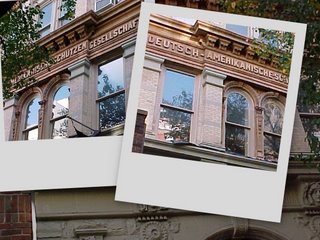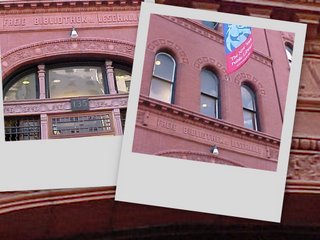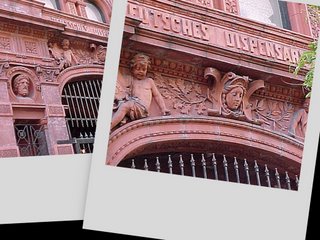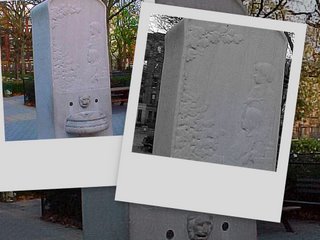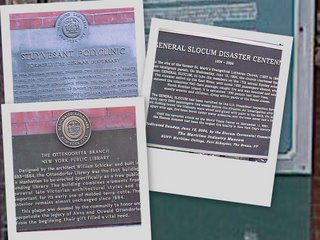

[composite of the martyrs: ambassador orlando letelier, general carlos prats, singer/composer victor jara, journalist charles horman jr., & the disappeared, 2006]
[various photos in santiago by jd nalley: salvador allende remembered in downtown santiago, metro exit commemorating the coup, the national stadium/torture center of the coup, street sign in santiago commemorating the coup, families of the disappeared demand action and answers, presidential palace la moneda and site of allende’s death at the hands of putschists, scenes of the rio mapocho where bodies floated by in the coup’s aftermath, statue dedicated to the martyred president allende]
the december 10th death of chile’s former and murderous dictator and embezzler—never punished for his crimes against humanity—should only serve as another opportunity to remember the over 3,000 consumed by the terror in the aftermath of the september 11, 1973 coup. we can also revere the over 100,000 tortured or detained by the illegitimate regime and the 200,000 forced into exile to escape the terror. this number includes those victimized by sexual torture at the hands of coup forces in santiago’s infamous “venda sexy” (sexy blindfold). let us celebrate the lives of those consumed in the death centers villa grimaldi, chacabuco, pisagua, and—the biggest torture center of all—the national stadium, where 12,000 were held and brutalized after the military coup. let us remember the innocent whose bodies floated by in rivers fed by the andes past horrified and traumatized chileans. let us remember those piled high in morgues or on cul-de-sacs. [pinochet’s butchery proved too vile even for his co-conspirator, air force general gustavo leigh, who was ousted by the murder/embezzler in july 1978.]
many of the martyrs will remain nameless—except to their families, friends, and neighbors. many died without a trace—disappeared by pinochet’s sinister forces and either buried in mass graves or dumped from the air into the pacific ocean. the latter operation was exposed in 1976, when the body of activist marta ugarte washed up on a chilean beach—leading to the discovery of 500 others so disposed in an attempt to hide crimes against humanity.
then there are notable victims of the terror unleashed that september day in 1973. there are former ambassador to the u.s. orlando letelier and general carlos prats—two of the many murdered by “operation condor,” spearheaded by pinochet’s secret police, “dina” (national intelligence directorate). then there is the nobel prize winning poet pablo neruda—hounded in his ransacked home and tortured by the forces of the coup as he suffered the painful late stages of terminal cancer. there are the american victims, journalists charles horman, jr. (investigating the murder of constitutionalist general rené schneider chereau) and frank teruggi—both held in the national stadium and murdered by the putschists for “knowing too much.”
victor jara! this remarkable chilean poet, singer/songwriter, professor, dramatist, and political activist was a major proponent of the “nueva canción” movement and marked for special brutality by forces of the coup. while putschists managed to destroy the vast majority of jara’s recording masters, his widow joan jara (a british national) managed to sneak recordings out of chile. his songs, among them “plegaria a un labrador (“a farmer's prayer”) and “te recuerdo amanda” (“i remember you amanda”), remain timeless. taken, along with thousands others to the national stadium (renamed in september 2003 as the “estadio victor jara”), jara was ceaselessly beaten—his torturers breaking the bones in his hands as well as his ribs. fellow prisoners recount putschists’ taunts for jara to play guitar for them as he lay in pain. defiantly, he sang a song associated with allende’s unidad popular government. battered further, jara was riddled by a machine-gun on september 15, 1973 and his body dumped on a road outside santiago before being taken to a city morgue. in advance of his murder, jara wrote a poem about the horrors faced by prisoners in the stadium that was smuggled out in the shoe of a friend.
general carlos prats—pinochet's predecessor and army commander under allende—bravely resigned and sought asylum in argentina rather than support illegitimate actions against chile’s longstanding democratic system. there, he and his wife sofia cuthbert were similarly murdered in a 1974 buenos aires car bombing carried out by dina and ordered by pinochet.
while murdered before the coup commenced, general rené schneider—who opposed a coup d'état and supported keeping chile’s military apolitical—was also a victim of the dark forces from which emerged pinochet, and schneider’s death made the nightmare possible.
pinochet’s expiring provides a fresh impetus to celebrate the lives of former ambassador letelier and 25-year-old american ronni karpen moffitt whose lives were taken in a calculated and cowardly murder thirty years ago. driving to their jobs at the institute for policy studies, both were killed by a car bomb just blocks from the white house. the institute for policy studies now hosts annual “letelier-moffitt human rights awards,” an apt observance for that tragedy of september 21, 1976 and a yardstick to measure the pursuit of justice for pinochet’s victims. it is “inconceivable” that the letelier assassination was carried out without pinochet’s authorization insist two former fbi agents and a former assistant u.s. attorney. clinton officials reactivated the letelier-moffitt investigation and declassified more than 16,000 documents, which have clarified our nation’s intervention in chile and served as evidence in legal cases. horribly, it was a u.s. citizen working for the dina—michael townley—who planned that murder.
this juncture is now an opportunity to remember those countries whose embassies sheltered the desperate souls in threat of life and limb by forces of darkness (including scores of brazilians, bolivians and uruguayans who’d fled repression in their own countries and sought refuge in chile only to be trapped). unfortunately, neither the u.s. nor britain belong to this “roll of honor,” which includes mexico, argentina, italy sweden, france, belgium, and—eventually—the netherlands. (once the objectionable and unmoved dutch ambassador left santiago, a more sympathetic diplomat who became the chargé d’affaires rented a house, bought mattresses, and hired a cook to shelter the endangered—this sanctuary utilized immediately by three leftist parliamentarians.) gaining entrance to such supportive embassies and safe houses proved formidable—with putschists posting patrols outside embassies to snatch the desperate into oblivion. notably, the belgian embassy—located in santiago’s affluent providencia—managed to coordinate such escapes with the short window of opportunity provided by police-cordon changeover.
sweden’s ambassador, the late harald edelstam bravely dueled with the putsch’s dark forces. in the spirit of raoul wallenberg—with three months available before being declared “persona non grata” by the putschists and expelled—edelstam managed to get 1,300 persecuted and endangered people out of chile (including the diplomatic corps of the cuban embassy and 54 uruguayans held at the national stadium). french ambassador pierre de menthon and india’s ambassador also stood up for the vulnerable.
thankfully, the recently elected chilean government headed by president michelle bachelet has denied the tyrant/embezzler the full state funeral usually reserved for former presidents. president bachelet’s father was tortured during those dark days—and died soon thereafter. still unrepentant—the tyrant’s youngest son, marco antonio pinochet, called bachelet’s decision not to attend the murderer’s funeral petty and said the current chilean government was “incapable of taking a noble stance at this moment in history.” did he really expect the daughter of one of those tortured by pinochet to attend? in contrast, his sister lucía pinochet hiriart called the use of torture during her father’s tenure “barbaric and without justification.” [meanwhile, an emotionally overwrought grandson of the murdered general prats, 39-year-old artist francisco cuadrado prats, spat on pinochet’s coffin at the dictator’s wake. the younger prats was fired by the chilean municipality for which he worked—though that decision has met with protest.]
pinochet’s death provides united states citizens—whose tax dollars financed the notorious destabilization campaign against the democratically elected administration of president salvador allende gossens and otherwise made it possible for pinochet to betray the chilean constitution—an opportunity to examine the policies of our government toward our neighbors in latin america. never can we forget the significant role the nixon administration and former secretary of state henry kissinger had in financing, supporting and preparing the scenario for a military coup in chile. our government spent millions to arm right-wing militias, support the right-wing press, and pay off chilean politicians to stymie, and eventually overthrow, salvador allende's unidad popular government.
never again can we allow the cia to finance strikes by transport workers and shopkeepers, nor sabotage public infrastructure, and otherwise foment economic chaos as was done to chile’s legitimate constitutional—and nonaggressive—democracy.
any u.s. ambassador who makes such belligerent comments as “not a nut or bolt will be allowed to reach chile under allende” (as was done by then u.s. ambassador edward korry) must be fired posthaste. during a period when the u.s. pushed for détente and trade with the soviet dictatorship, it vetoed bank loans and foreign-debt credits, and blocked export of food-stuffs and spare parts for machinery and transport equipment to the chilean democracy. such putative policies put buses out of commission—paralyzing a third of chile's transport system. export-import bank credits, totaling $234 million in 1967 fell to zero in 1971 and unleashed financial panic in a democracy heavily dependent on trade with the u.s. lack of replacement parts caused by the nixon-kissinger embargo—despite chile's offer to pay cash in advance for them—paralyzed chile's copper, steel, electricity, and petroleum industries. chileans suffered shortages of foodstuffs, toilet paper, soap and many essential items (though those items “miraculously” appeared on store shelves in the coup’s aftermath). never can we forget international telephone & telegraph’s role in the clandestine and benighted economic disruption of chile.
perhaps we can wash our hands of the infamous “western hemisphere institute for security cooperation” (formerly “school of the americas”), whose alumni include a large number of pinochet’s colleagues, including officers of the highest ranking involved in the butchery. in the period before and after the coup, chile sent over 1,500 troops to learn the fine points of “counter-insurgency,” “irregular warfare,” “psychological operations,” and various means of torture in contravention of the geneva accord. unconscionably and outrageously, the school of the americas held pinochet in high esteem—displaying, for many years, a personal note and a ceremonial sword donated by the chilean tyrant/embezzler at the fort benning office of the school of the americas commandant. the existence of this tax-supported institution—which has produced the likes of 1972 alumnus, the el salvadoran butcher robert d’aubuisson who murdered archbishop oscar romero—should be intolerable to citizens of the united states.
our republican-held white house—home of pinochet’s former patrons, the war criminals nixon and kissinger—issued a most interesting statement following pinochet’s death, calling his rule a “difficult period.” that understatement was followed by a most telling missive: “our thoughts today are with the victims of his reign and their families. we commend the people of chile for building a society based on freedom, the rule of law, and respect for human rights.” what a welcome about-face from the days of reagan when a $160 million loan package was awarded to the tyrant/embezzler's dictatorship! reagan’s administration also received the wife of the tyrant/embezzler to tea at the white house while denying a visa to hortensia allende (the widow of chile’s constitutionally sanctioned president), which prevented her from visiting the u.s. to give a speech on human rights abuses in chile.
ironically, pinochet expired three days after the staunchest member of his cheering section, jeane kirkpatrick, who referred to the murderer/embezzler as a good and honorable man. kirkpatrick—who died on december 7 and was reagan’s u.n. ambassador—had also cheered on argentine death squad leader general jorge videla.
surely, kirkpatrick must have been vexed by the 17 months her buddy spent under house arrest in britain—and his resultant and deserved humiliation. though cold comfort to those impacted by his monstrous tenure, that custody provided important precedents to punish future tyrants. while spain, belgium, france, and switzerland were stymied in their efforts to extradite pinochet, the rule of “universal jurisdiction”—that every nation has an interest in bringing perpetrators of crimes of international concern to justice–can no longer be ignored. this holds regardless of where the crime was committed—and regardless of the nationality of the perpetrators and their victims.
thus, a spanish judge did have the authority to order pinochet’s arrest for crimes committed primarily in chile and against chileans! this has enabled chadian victims to bring a criminal prosecution in senegal against the exiled tyrant, hissein habre—thankfully indicted and awaiting trial on torture charges. so, while pinochet was ultimately returned to chile, his house arrest in britain has put a crimp in the travel of war criminals and tyrants: indonesia’s suharto avoided seeking medical treatment in europe for fear of being arrested, while henry kissinger has curtailed international travel to avoid certain arrest and prosecution related to his past enabling of dictatorships and international meddling. [this loophole has also proven a boon to democracies such as chile and argentina in which democracy and rule of law were only restored through the blackmail granting of immunity to criminal military authorities.]
as a former head of state, pinochet enjoyed not one shred of immunity from arrest and extradition. british authorities ruled that, although a former head of state enjoys immunity for acts committed in his “functions” as head of state, such “functions” do not include international crimes such as torture and crimes against humanity. furthermore, once a country becomes a signatory to the united nations convention against torture, not one individual in that country—regardless of rank or position—can claim immunity for that crime.
it is just amazing that some chileans could actually cry and mourn for pinochet when 2004 investigations uncovered that pinochet had stashed millions of dollars in secret bank accounts—and unreported to tax authorities. that year a u.s. senate money laundering investigation led by michigan democrat carl levin and minnesota republican norm coleman uncovered a network of over 125 securities and bank accounts at riggs bank and other u.s. financial institutions used by the tyrant/embezzler and his cronies for 25 years. it is remarkable and an irony that the subcommittee uncovering this was charged only with investigating compliance of financial institutions under the heinous and draconian “usa patriot act,” rather than the actions of pinochet per se.
personally, the coup in chile marks an important milestone. never before had i argued with a teacher about politics. but on a september morning in 1973, as a 14-year-old ninth grader, i did just that. awaiting for my u.s. history class to commence, the teacher from the previous class was putting papers in his briefcase and preparing to leave when he commented to my wonderful teacher, mr. nortier, that “wasn’t it great that they got rid of that ‘communist’ in chile.” before mr. nortier had a chance to respond to him, i told that gloating teacher that it wasn’t good. i defended the allende policies about which i knew—for instance, provision of milk to poor children, health care for the poor, and land reform. that is an event i can never forget. as a new yorker, i share the same date of horror—september 11—with the people of chile. having traveled to that country (two months prior to the world trade tragedy), i made pilgrimages to such places as the national stadium and la moneda palace and tried to imagine the those places in that horrible period.
 [digital composite: cher, cilla black, dionne warwick. 2006]
[digital composite: cher, cilla black, dionne warwick. 2006]















 movement research performance journal #30 magazine merits a good read with its spotlight on 2006-2007 bessie award winner and dance maker jennifer monson. the incisive interview by movement research board of directors president ishmael houston-jones brings to the fore this energizing presence during/veteran of the high tide of queer and anti-interventionist activism during reagan and bush i. monson’s words in mrpj so resonate to the core:
movement research performance journal #30 magazine merits a good read with its spotlight on 2006-2007 bessie award winner and dance maker jennifer monson. the incisive interview by movement research board of directors president ishmael houston-jones brings to the fore this energizing presence during/veteran of the high tide of queer and anti-interventionist activism during reagan and bush i. monson’s words in mrpj so resonate to the core: